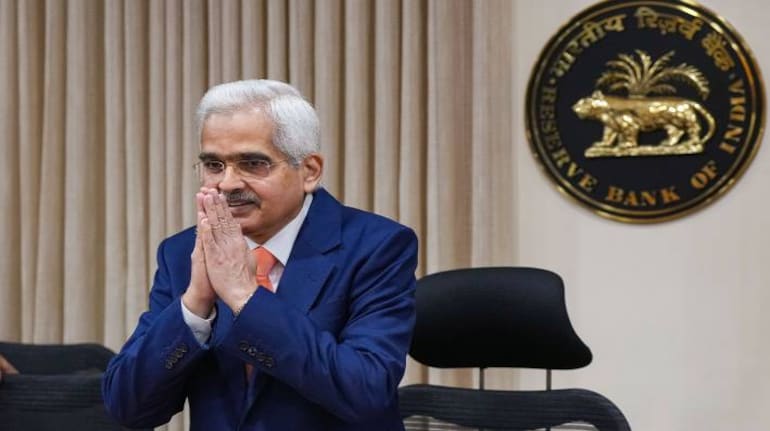



The Reserve Bank of India’s Monetary Policy Committee is widely expected to keep the repo rate unchanged at its review meeting ending on December 8, but is likely to adopt a cautious stance regarding rising threats of food inflation and excess liquidity in the system.
While the market participants are keenly awaiting the RBI’s revised inflation and GDP forecasts, they are also keeping a close watch on any additional measures by the central bank to suck out the excess liquidity.
The MPC has kept the repo rate unchanged at 6.5 percent in the past four monetary policy reviews, after raising the rate by 250 basis points since May 2022.
Catch all the action on MPC meet outcome here
Food inflation
Experts estimate that the consumer price inflation will rise above the RBI’s tolerance level of 6 percent due to soaring costs of vegetables and pulses. While India’s retail inflation eased to 4.9 percent in October, the price have been quite volatile in recent weeks, with perishables, specifically onions and tomatoes, and pulses and spices surging.
November witnessed a nearly 59 percent month-on-month surge in onion retail prices, and intensifying food inflation. Irregular rainfall hit rabi crops and a delayed monsoon disrupted kharif crop harvesting, which constrained supplies.
Cautious stance
Experts expect the Reserve Bank to keep the policy rate unchanged but adopt a cautious stance as food inflation is expected to have increased in November.
Also Read: Don’t expect fireworks at the MPC meet outcome
“The expectation of a rise in domestic November inflation, drop in Rabi cultivation, and increase in food grain prices will influence the RBI to adopt a cautious approach in the short-term,” said Vinod Nair, head of research at Geojit Financial Services.
“We expect the RBI to remain on a cautious hold this week at its MPC meeting. While stable core inflation should be a relief, it will be cautious of the impact of elevated food inflation on inflation expectations,” said Rahul Bajoria, managing director and head of EM Asia Economics at Barclays.
GDP forecast
Experts see an upward revision in the GDP forecast for FY24. GDP growth in the second quarter of the year at 7.6 percent on-year was significantly higher than the market expectations and RBI forecasts. This resulted in a growth of 7.7 percent on-year in H1FY24.
Also Read: MPC likely to hold rates again as inflation worries persist, say economists, bankers
“Given the stronger growth momentum, there is a possibility that the RBI revises its GDP forecast for the current year by 25-30 basis points from the existing figure of 6.5 percent,” said an expert who requested not to be named.
Liquidity withdrawal
The Reserve Bank of India needs to remove excess liquidity from the market. "The RBI is expected to maintain the system liquidity at a slightly deficit level to ensure better transmission of interest rates," said Suman Chowdhury, chief economist and research head at Acuité Ratings & Research. He said that with higher government bond redemptions scheduled in December and the likelihood of higher FPI flows, the RBI may consider the deployment of tools like open market operations (OMOs) to suck additional liquidity out of the market, by selling government bonds in the market.
Earlier, in August, the RBI introduced incremental cash reserve ratio (I-CRR) to bring down liquidity overflow. The I-CRR required banks to set aside additional 10 percent capital for incremental lending during May-July. This froze a little over Rs 1 lakh crore of cash from the banking system, the RBI’s internal calculations show.
Later, in October, Governor Shaktikanta Das said the central bank might launch OMOs to remove excess liquidity. "We do not think the RBI is looking to tighten liquidity excessively, lest it hinder growth,” said Barclays in a note. "Instead, the central bank would look to avoid bond ratings to fall drastically, to near or below the repo rate levels, thus conducting two-way market operations to manage liquidity."
Furthermore, Vikas Gupta, smallcase manager, Omnscience Capital said that RBI would like to support growth growth in election year. "This means boosting secured lending to corporates going forward. So in order to create liquidity here, there might be an indication on possible reduction in SLR (statutory liquidity ratio) rates," he said.
Consumer loan growth
The risk weight for banks and NBFCs for unsecured loans has been raised to check the unbridled rise in such loans. But if the impact is not seen in books of the banks, there may be further indication of tightening, said Sharad Chandra, director at Mehta Equities.
Governor Das had flagged the rapid growth in consumer loans in the October MPC meeting, advising banks and NBFCs to strengthen their internal surveillance mechanisms and address the build-up of risks.
Disclaimer: The views and investment tips expressed by experts on Moneycontrol.com are their own and not those of the website or its management. Moneycontrol.com advises users to check with certified experts before taking any investment decisions.
Discover the latest Business News, Sensex, and Nifty updates. Obtain Personal Finance insights, tax queries, and expert opinions on Moneycontrol or download the Moneycontrol App to stay updated!
Find the best of Al News in one place, specially curated for you every weekend.
Stay on top of the latest tech trends and biggest startup news.